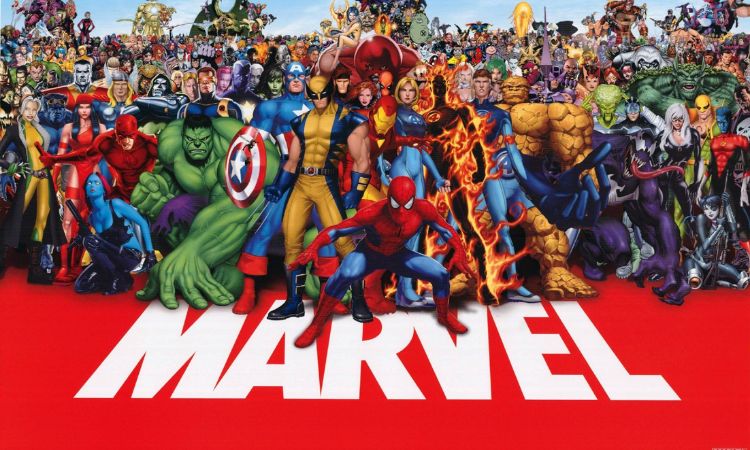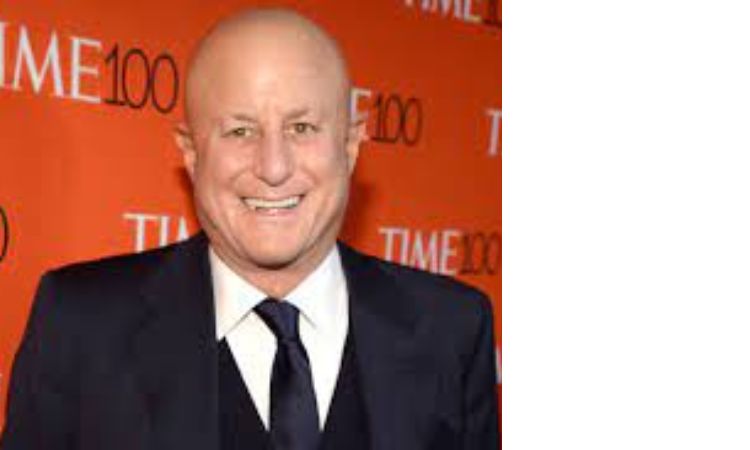Every great comic book story has what is known as its “darkest hour”—a turning point where all appears lost. The villains are closing in for the kill while the heroes are on their knees and the city is a burning ruin. The winter of 1996 marked Marvel’s lowest point.
Marvel was a corporation that had gained in stature throughout the 1960s, 1970s, and 1980s thanks to the frequently outstanding art and storylines in such comics as Fantastic Four and The Amazing Spider-Man, and by the early 1990s, its financial success had peaked. Marvel’s stock value fell after a slew of financial bubbles burst and dubious business agreements; shares that were previously worth $35.75 each in 1993 were now only worth $2.375 three years later. Following a nasty altercation between several extremely wealthy investors, the future of the company was dubious for a while.
Marvel managed to overcome all the corporate intrigue that followed the firm in late 1996 and for several months afterward, and emerge from the ruins a decade later as a juggernaut in the film industry.
Interpreting the Prophecy of Doom

The Sandman author Neil Gaiman spoke before around 3,000 booksellers in 1993 and delivered a statement that few in attendance wanted to hear, despite Marvel and the comics industry as a whole seeming to be in rude health at the time.
In it, he made the case that the success of the comic book business was a bubble, one that was stoked by incentivizing collectors to buy several copies and stockpile them in the anticipation that they’ll one day be valuable collectibles. The value of tulip bulbs unexpectedly increased during this peculiar moment in the 17th century, according to Gaiman, before the market crashed again.
In particular, Gaiman observed, “You can sell a lot of comics to the same person if you tell them you are investing money for high guaranteed returns.” The tulips will eventually rot in the warehouse since you are selling bubbles and tulips, which will one day explode.
The bubble Gaiman spoke of had started a few years earlier, when collectors who had grown up with their favourite superheroes as children began to cherish comic books, which had previously been viewed by parents as disposable. When Golden Age comics were fetching thousands of dollars in the 1980s, the mainstream media became interested in comic book collecting.
By offering variant covers, often with foil embossing or other striking, sophisticated printing techniques, publishers were actively pursuing the collector market. These were eagerly purchased by readers as well as investors who believed they had found a surefire way to make money by stockpiling copies to later sell for a profit.
Impact of Ron Perelman

Marvel caught the attention of Ron Perelman as the comics were flying off the racks. Perelman was a billionaire businessman with a wide smile and a large cigar in his fingers. In 1985, he closed a significant transaction for the cosmetics giant Revlon through his holding company, MacAndrews & Forbes. Early in 1989, Perelman spent $82.5 million to acquire New World Pictures’ Marvel Entertainment Group.
In less than two years, Marvel became public, and Perelman went on a spending binge, acquiring interests in ToyBiz, several trading card companies, Panini stickers, and a distribution company called Heroes World. All altogether, those purchases reportedly cost Marvel $700 million.
Marvel was encouraged by the popularity of Spider-Man and the X-Men, which were selling in massive quantities through the early 1990s. The first issue of the new comic book X-Force came in a polybag with one of five different trading cards inside of it, which was a clever marketing ploy that helped boost sales. You guessed it: Collectors had to purchase numerous copies of the same comic in order to obtain all five cards. That’s exactly what collectors did while the craze was still in full effect; according to former Comics International news editor Phil Hall, fans were purchasing five copies to keep pristine and unopened and a sixth to tear into and read.
Then the bubble broke as Gaiman had anticipated. Revenues from comic books and trading cards started to decline between 1993 and 1996. Marvel, which had before appeared unbeatable as it increased in size, now appeared weak.
“When the business turned,” remarked Marvel’s former CEO and chairman Scott Sassa, “it was like everything that could go wrong did go wrong.”
Some in the sector went farther and claimed that Perelman’s strategies had put the entire sector in danger:
According to Chuck Rozanski, CEO of Mile High Comics, “[Perelman] reasoned, quite correctly, that if he increased prices and output, that hardcore Marvel fans would devote a larger and larger portion of their disposable income toward buying comics.” “Once he got the sales data necessary to support this theory, he went public with Marvel and sold 40% of the company’s stock for a price significantly higher than what he had originally paid for the entire business. The problem with his strategy was that he promised Marvel investors even more brand extensions and pricing rises. Early in 1993, when more and more comic book collectors simply stopped doing so owing to the exorbitant cost and amid a widespread sense of diminishing quality in Marvel comics, it became clear to the majority of comic book shops that this plan was obviously impossible.
Regardless of whether Perelman was directly at fault, the repercussions for the sector as a whole were extremely unpleasant. As sales fell by 70%, hundreds of comic book retailers filed for bankruptcy. The boom had abruptly turned into a bust, and even Perelman acknowledged that he hadn’t foreseen the grim future Gaiman had foreshadowed in his address.
Perelman claimed, “We couldn’t figure out how much of the market was driven by speculators; the folks buying 20 copies, reading one, and keeping 19 for their nest egg.
Boardroom Showdown
Marvel Entertainment had a substantial debt load by 1995. Perelman made the decision to move forward into a new area in the face of rising losses. He founded Marvel Studios in the hopes that it would finally allow the company’s most well-known characters to appear on the big screen after years of legal issues. In order to accomplish this, he intended to acquire the remaining ToyBiz stock and combine it with Marvel to form a single, more powerful organization.
Marvel’s stockholders objected, claiming that the harm to the company’s stock price would be excessive. In response, Perelman filed for bankruptcy, giving him the authority to restructure Marvel without the approval of the stockholders.
A perplexing power battle that lasted over two years then ensued. Carl Icahn, a stakeholder, attempted to challenge Perelman, and the financial press gleefully covered the ensuing highly public argument. Icahn stated that Perelman “was like a plumber you loan money to him to get him started in business; then he comes in, wrecks your house, and tells you he wants the house for nothing.”
Few could have foreseen the bizarre ending of the conflict when it was finally resolved in December 1998: ToyBiz and Marvel Entertainment Group were eventually amalgamated following a protracted legal struggle, but Perelman and his adversary Icahn were both fired as a result. The CEO Scott Sassa, whose employment had totaled barely eight months, and other employees with ties to Perlmutter were also fired.
They had been ousted by Isaac Perlmutter and Avi Arad, two ToyBiz executives who had served on Marvel’s board since 1993. After Scott Sassa left, they appointed Joseph Calamari, a 55-year-old executive who oversaw Marvel in the 1980s, as the company’s new CEO.
After the financial drama in the boardroom subsided, Marvel started to focus on the movie industry, a target it had been aiming for since the 1980s.
Marvel’s Big Screen Revolution
Israeli-born Avi Arad gave the toy business a tough attitude. After ascending to the position of CEO of ToyBiz and being dubbed “the hottest developer in the toy business” by one of his contemporaries, Arad’s significant career transition occurred when Marvel purchased a 46 percent stake in the business in 1993. As part of the agreement, Arad was given a 10% stake, and while he first controlled ToyBiz’s Marvel action figure production, he rapidly took Stan Lee’s place as the chairman of Marvel Films.
On the popular animated TV show X-Men, Arad acted as executive producer. By the summer of 1993, he had negotiated a deal with 20th Century Fox to develop an X-Men film.
Marvel had long struggled to bring its trademarks to the big screen: the Spider-Man movie rights were entangled in a web that wouldn’t be untangled until the late 1990s, and Howard the Duck from 1986 was a critical and commercial failure. However, it seemed now that Arad’s strategy would succeed.
Then Marvel’s financial problems started, and Arad found it difficult to persuade Hollywood producers of the company’s potential for the big screen. He later recalled that trying to get people to see what was directly in front of them was “literally a daily battle.”
When Marvel started to regain its footing in the late ’90s thanks to the success of Blade and the X-Men at Fox, things started to shift. However, Marvel’s options were limited. Blade brought in $70 million at the box office, but Marvel only received a pitiful $25,000, according to a Slate story. Despite the success of the X-Men and Spider-Man films, Marvel only received a small portion of the revenue. “We were giving away the best part of our business,” Arad lamented.
Cinematic Universe’s Inception
A proposition was presented to Isaac Perlmutter of Marvel in 2003 by a talent agency by the name of David Maisel. Why not make the movies under your own name so you may benefit from them? Why can’t the tales intertwine if you’re making your own movies, just way they do in comic books?
Though Marvel’s stock had recovered since 1996, Maisel believed that entering the movie industry could cause it to rise even higher. In principle, it was a plan that could be worth countless millions of dollars. Convincing Marvel’s board of directors would be difficult, and obtaining the necessary funding would be equally important.
When Marvel was able to reach an agreement with Merrill Lynch in 2005, a significant turning point was reached. The deal’s specifics sounded hazardous because Marvel was essentially using its most valuable assets, including Thor and Captain America, as collateral. Those superheroes would suddenly belong to the bank if the movies didn’t bring in any cash.
Merrill Lynch provided Marvel with access to a sizable financial reserve, $525 million spread over seven years, which it could use to fund ten films with budgets ranging from $45 million to $180 million. Marvel was able to repurchase the rights to several characters, including Iron Man, Black Widow, Thor, and Hulk, thanks to their increased power.
Iron Man will be Marvel’s first independent production, the company revealed shortly after the agreement with Merill Lynch was finalized. A character who had been stuck in development limbo since the 1990s was now getting a chance to become a big-screen star. Universal had initially had the rights before selling them to Fox and then New Line.
Marvel made another significant acquisition as Iron Man production got underway, one that may have been just as crucial to the company’s future success as the return of some of its most well-known superheroes.
The President and $4 billion agreement
As a personal assistant to producer Lauren Shuler Donner (the wife of filmmaker Richard), Kevin Feige got his start in the movie industry. Feige had such a passion for comic books that, despite being only 27 at the time, he was given the job of producer on Fox’s production of the X-Men. Feige joined Marvel Studios as president in 2007 and went on to develop further Marvel movies, such as Spider-Man, Daredevil, and Hulk. Under his direction, Marvel kept growing; Iron Man, his first production for the company, brought in $585 million, launching a cinematic universe that is still in the early stages of development.
The following pivotal moment occurred in 2009 when Disney acquired Marvel for an astounding $4.3 billion. With his customary bluster, Avi Arad argued that Disney had gotten a good deal. “The cost is reasonable!” said Arad. It means nothing! We anticipated this brand because it is really strong. It wasn’t an accident.
Arad’s assertion appears to be supported by Marvel’s track record over the last almost ten years: The Avengers alone made billions and is currently the third-highest earning movie of all time. The second Marvel movie to gross over $1 billion was Iron Man 3. Even an eccentric movie like the space opera Guardians of the Galaxy, which some people thought was a gamble, made more than $750 million. In addition to becoming yet another $1 billion plus success story, Black Panther has also become one of the highest-grossing movies of all time.
Marvel has experienced a spectacular turnaround in fortunes for a business that was in debt 20 years ago. Marvel, in the manner of a superhero, came back from a crushing setback in 1996 to pull off a multi-billion dollar triumph.















